Once-a-Month Grocery Shopping: The 4-Tier, Stock-Up Plan for Healthy Eating
~ With good planning and a perfect shopping list, it’s completely possible to shop just once a month … and still enjoy nutritious and really delicious meals! Read all about how I’m doing it – and then give it a try for yourself! ~
Why We All Need a Grocery Shopping Plan Now
With nearly everyone stuck at home these days, we all need a lot of food on hand – probably more so than ever before, for two particular reasons:
(1) To feed the hungry people who now spend all day roaming the house, looking for things to do … and things to eat. They used to take their hungry, food-seeking selves off to school or the office. But now, they’re just HERE. And they’re hungry!
(2) To avoid running out to the store any more than absolutely necessary. Filling our pantries, fridges and freezers with foods that keep for a long time will help to keep our families (and everyone else out there) safer, by cutting down on how often we’ve got to head to the grocery store.
As a food blogger, I’m used to planning epic shopping trips with multiple meals and photo shoots carefully sketched out.
If I didn’t plan well, I’d spend practically every single day running to the store … and ain’t nobody got time for that … even in a “normal” world!
The Goals
So, a couple of weeks ago, I mapped out a specific plan for grocery shopping in our “new normal” – with the goals of:
- Adhering to our reasonably healthy eating habits, with plenty of fruits and veggies mixed into more “shelf-stable” or “pantry staple” meal plans.
- Being able to keep the fam fed for 4 weeks without any (or very, very minimal) additional trips to the store.
- Stocking the pantry and freezer (without rampant hoarding) with long-term-stable ingredients we’d have on hand in an emergency, in case we couldn’t leave the house at all.
It’s working like a charm so far! And I’m excited to share my ideas, in the hope that my plan will help some of you, too!
Basically, what I’ve created for myself is a 4-tier plan for each main grocery run (which, again, I hopefully won’t have to do more than once a month).
The 4-Tier Plan: Step 1 (Hurray! Fresh!)
Step 1 is to plan recipes and foods that involve ingredients that won’t keep well – you’ll plan to enjoy these in the very first days after your shopping trip.
• Think of special, family-favorite meals that will cheer everyone up! (But that may have unique ingredients or items that just won’t keep for more than a few days.)
• Be sure to grab delicate fresh fruits and vegetables that will be delicious (and nutritious) for just a couple of days – those that don’t store well for very long. Depending on what your store has available, these might be things like fresh tomatoes and berries, and tender lettuces for crisp, refreshing salads.
• This is also a great time to use fresh meats and buns or bread, before you freeze them for longer storage (more about that later).
After my most recent grocery run, a couple of our first dinners were:
• Our beloved Easy Honey-Glazed Salmon, served alongside fresh, perfectly roasted spring asparagus
• And, hearty and comforting Orecchiette with Sausage and Spinach (which deliciously packs in 10 ounces of lovely, fresh spinach!)
The 4-Tier Plan: Step 2 (Phasing in Staples)
Next, plan meals that involve a somewhat larger amount of shelf-stable items (like dried pasta, canned beans, or freezer items) … but that still also include produce or meats with a slightly longer “shelf life.”
For example, peppers typically last at least a week if they’re properly stored in the crisper. Apples, broccoli and cauliflower generally stretch even longer.
And pantry staples like onions, garlic, potatoes – as well as “winter” squashes like butternut squash and spaghetti squash – will usually keep for weeks.
These types of produce items will allow you to rotate fresh fruits and veggies into your menu plans, without running back to the store.
Some of the recipes I’ve made in the last couple weeks that fit into this “Tier 2” category include:
• Roasted Broccoli and Cauliflower Pasta with Parmesan, Lemon and Garlic
• And the surprisingly delicious Parmesan Roasted Broccoli Stalks (with the leftover broccoli stalks from the pasta recipe above – since we don’t want to waste anything!)
• Lightning-Fast Cheesy Three-Pepper Ravioli with Italian Sausage (pictured below)
For even more recipes ideas, take a peek at our recent post on Healthy, Easy Pantry Staples Recipes!
The 4-Tier Plan: Step 3 (Getting Creative with Shelf-Stable Go-To’s)
Step 3 is where you start to rely exclusively on pantry-staple items, and on pre-packaged meals and items that you can freeze.
Think about menu plans that would get you through several weeks if – in a worst-case scenario – you truly weren’t allowed to leave the house at all.
My goal here is to be able to prepare meals that aren’t just ramen noodles, canned soup, and frozen hot dogs! I want to be able to cobble together meals that still have some nutritional value (since eating well is a key part of staying healthy).
In this phase, I’m not necessarily focused on mapping out exact recipes to make. It’s more about grabbing basics that I know I can piece together into a variety of meals.
I had to think hard about how I could creatively accomplish this. Here are some ideas:
Pantry Ingredients
Of course, I wanted to have plenty of things like peanut butter, rice, dried pasta, canned beans, quinoa, and chia on hand. Even if I don’t have a specific plan for what I’ll make with them, these kinds of shelf-stable ingredients can morph into all sorts of meals.
• Rice and pasta are the perfect base for practically any sauce, stir fry or skillet meal you can dream up. And if you choose more nutritious brown rice and whole-grain pasta, they add a lot of keep-you-full fiber and extra nutrition to the meal.
• Peanut butter and canned beans add protein to snacks and meals, perfect for when you begin to run low on meat.
• Quinoa and chia are some of the only plants that have all the amino acids needed to be complete proteins, and they keep for months and months (and moooonths!) if you store them in the refrigerator or freezer. I’ve been making Chia Seed Pudding every couple of days this past week (because you know we’re obsessed with it)!
Meats
In addition to buying already-frozen shrimp and fish, I also purchased fresh meats to freeze: lean ground beef or turkey, rotisserie chicken, turkey sausage, and chicken breasts. I broke the packages down into amounts (about 1 pound each) that I can grab for making various, individual meals.
I don’t necessarily need a specific recipe planned for each of these. I know I can make something up on the fly as long as I’ve got some basics to work with.
A key here is to store the meats properly, in freezer-safe bags, wraps and containers, so they’ll maintain their quality and last as long as possible without freezer burn.
When you’re ready to use some of your carefully frozen meats, be sure to thaw them properly, too – and not by leaving them out on the counter all day! You definitely don’t want to end up with a case of food poisoning right now (although it’s not a fun thing to endure anytime!), when nobody wants to have to go to a doctor’s office or hospital if it can possibly be avoided.
Note, too, that most lunch meats usually don’t freeze all that well. So, if your family loves deli sandwiches, those should fall under Step 1 above – and be eaten in the first few days after shopping.
Breads
Buy breads and rolls and re-package them for freezing. Tightly wrap them in layers of freezer wrap and store in air-tight freezer bags. And, of course – reach for whole grain choices to boost your nutrition while you’re trying so hard right now to stay healthy.
Cheese
Most “standard” cheese freezes pretty well, too.
Frozen Produce
Frozen fruits and veggies! These are a lifesaver when my supply of fresh produce runs low.
Some of our go-to favorites?
• We frequently use those microwaveable packs of green beans and also carrots anytime we need a quick side dish – those two veggies hold up great in the freezer! Frozen edamame is terrific, too (and perfect to keep on hand for whirring up a batch of Edamame Hummus).
• Frozen fruits are fabulous in smoothies, or in fruit-filled pancakes and muffins.
• And frozen peas, corn, and mixed vegetable blends are super useful in a lot of recipes we make – like our Crock-Pot Creamy Chicken Corn Chowder and our Easy Chicken Pot Pie Hand Pies (pictured below).
A bonus here: frozen fruits and vegetables are frequently even more nutritious than fresh. Surprised? It’s because they’re typically flash-frozen at the very peak of ripeness and freshness, locking in a lot of nutrients that fresh vegetables often lose in the days and weeks that they’re shipped and stored before you finally eat them.
Freezer Meals and Meal “Kits”
If you’re buying completely shelf-stable or freezer-stable meal kits, try to find the most nutritious options you can. I know you want to get out of that grocery store as quickly as possible, and this really isn’t the ideal time to spend extra moments reading all the ingredient labels.
But instead of just grabbing freezer pizzas or 27 boxes of Stouffer’s mac-and-cheese, try to look for meal kit options that include leaner meats and at least some veggies.
Or get a bit creative and envision how you could add some of those frozen fruits and veggies we just talked about into the meal kits, to boost nutrition. You could stir frozen broccoli into your Stouffer’s mac and cheese … or peas into that box of Kraft mac.
This is also the stage where we all might be making a few compromises, and eating foods that wouldn’t normally be our very first choice. Or, where we’re cobbling together meals out of a variety of items that we wouldn’t always think to put together. Which leads us to …
Bonus Fun!
• Brinner! – This could be an especially great time for wonky but fun meal ideas – like “Brinner” (aka Breakfast for Dinner). Everybody loves Brinner, and turning the day upside-down a little helps break up the monotony.
• Family Chopped! – Or, model a contest after the popular TV show “Chopped!” Challenge the family to root through the pantry, freezer and cupboards and propose the most creative and delicious meal they can dream up. Whichever idea gets the most votes from the rest of the fam becomes that night’s dinner!
Bottom line: be flexible, and you could easily buy yourself several additional days before you have to head out to the store!
The 4-Tier Plan: Step 4 (Stocking the Freezer As You Go)
In this step, I try to plan how I can double or triple recipes I’m making in steps 1-3 … to easily stock my freezer with healthy, homemade meals as I go (so I don’t have to rely on ramen noodles and canned soup)!
As a food blogger, I often make multiple (multiple!!) batches of a recipe, because we test our recipes so thoroughly and exhaustively before we publish them for you. And, since you know I hate food waste, that means I often end up freezing portions of leftovers that we can’t eat quickly enough.
So – lucky me! – I already had individual serving-sized bags of my beloved Instant Pot Sweet Potato Soup (pictured below) in the freezer.
And, of course, whenever I make some Quick and Healthy Snack Bites, I quadruple the batch, so we’ve almost always got grab-and-go baggies of those stockpiled in the freezer. Pretty sure there’s some Crazy Pineapple Chili and some Classic Turkey Chili, too. A good start already!
You can do a deep-dive into all of our make-ahead, freezer-friendly recipes by scrolling through the freezable recipes in our site’s recipe index. Here are just a few examples that rely mostly on common or pantry-staple ingredients:
• Crock-Pot Creamy Chicken Corn Chowder and also Crock-Pot Southwestern Chowder
• Easy Chicken Pot Pie Hand Pies
• No-Bake Blueberry-Almond Oatmeal Bars with White Chocolate (great as a snack or a dessert!)
Making a Perfect Grocery List
It can be difficult to make a perfect plan when you can’t be certain if all the items you need will be in stock. But, you definitely want to be sure you get everything you need (so you don’t have to head back out to the store again). And you want to be able to get out of the store as quickly and efficiently as possible.
A great list can make all the difference!
A couple of tips to help you map out your perfect list:
Tip #1 – I find it’s super-helpful to draw little lines on my grocery list to section off each recipe.
That way, if a major ingredient for a certain recipe is unavailable, I’ll know which other items are specifically for that same recipe, and I can skip those, since I won’t be able to make the recipe anyway. (Before you ditch an entire meal you’d planned, though – think about whether you could sub in some other ingredient for the one that’s out of stock. This is a great time to allow yourself to be a little creative with recipes. Sub in what you can find, and even if the recipe doesn’t turn out precisely as it’s supposed to – you’ll still be winning!)
Tip #2 – Always number your grocery list based on zones or aisles.
This can vary based on how your store is laid out. But, as an example, I mark all my fresh produce items as zone #1, all canned goods and shelf-stable items are zone #2, the freezer section is all coded as zone #3 … and so on.
This makes shopping so much faster, since you can be sure you’ve gotten ALL the items you need from, say, the produce section, before you move on. And you don’t have to waste time doubling back.
Tip #3 – In the store, cross off each item as you go.
I like to use a highlighter to cross things off, which makes it really easy to quickly see what’s left on my list. And, I can still read through the colored highlighter marking, in case I need to make changes to recipe plans when I come to an ingredient that’s out of stock. (If I scratch through list items with a pen, I can’t always read them later on if I need to).
Shopping Tips in the Store
Check Outdates
Don’t just grab the first item at the front of the shelf. Especially with items like milk and eggs, take the extra moment to find the longest outdate range you can, so you know your “stockpile” items will stay fresh longer.
Buy Staged Produce and Milks
If you have the option, select produce like bananas, mangoes and avocados (produce that often is sold slightly underripe) to use in “stages.” For example, choose a banana or two that are ripe and ready immediately, then select a few more that are slightly greener and won’t be ready for a couple days, and then pick a few more really green ones that will take even longer to ripen fully.
Also, it can be a bit more expensive, but you can stretch how long you’ll have fresh milk by purchasing Fair Life ultra-filtered milk, or some other milk alternatives (like almond or coconut) that don’t outdate as quickly as “regular” cow’s milk. To be the most budget-conscious here, buy as much “regular” milk as you know your family will use by the outdate, and then supplement with just a container or two of the more expensive choices to use after the “regular” milk is gone.
Remember that Frozen Fish and Produce Are Often Fresher Than “Fresh”
We’ve already mentioned that frozen fruits and vegetables are – nutritionally speaking – generally considered to be great alternatives to fresh, since they’re usually frozen at their very best.
You might be surprised to know that fish is often somewhat similar in this regard.
Unless you live near the body of water where your fish was caught (like on our nation’s coasts), the “fresh” fish in your grocer’s case was very likely flash-frozen at sea – just like the still-frozen fish that your grocer is also selling. Your grocer may simply have already taken the step of thawing the fish that’s on display in their “fresh” case.
You can read more about this HERE and HERE, but the main takeaway is: don’t automatically shy away from frozen fish, assuming that the “fresh” stuff in the display case is always better. It might be the exact same catch … and if you buy it still-frozen, you can stock your freezer with healthy fish that you choose when to thaw and use!
Safety at the Store
To keep yourself – and all the employees and other shoppers – safe, follow a few common-sense guidelines:
• Take a little bottle of hand sanitizer and a couple of sanitizing wipes with you. Wipe down your cart thoroughly before you begin shopping, and sanitize your hands a couple of times during your shopping trip, especially after touching high-traffic touch pads or the door handles on the freezer cases.
• Be sure to maintain an appropriate social distance. If an aisle is too crowded, skip over it and come back to that aisle in a few minutes. Don’t crowd into the checkout lines, either – give other shoppers enough space.
• Sanitize your hands (and your phone) as soon as you settle into the car, and give them a thorough washing as soon as you walk in the door at home. There are some suggestions that it can also be a good idea to give food packages a quick wipe down, too, as you’re putting groceries away. And it’s always – even in “normal” times – important to rinse produce before you eat it.
• If you even suspect you may be ill (or if you’re in a particularly at-risk category or just want to be extra careful) consider utilizing the home delivery many supermarkets offer, so there’s no need for person-to-person contact at all. There’s generally an up-charge for this service, and you may not have the flexibility to substitute for ingredients and change-up your game plan on the fly. But, it’s definitely an option that could come in handy.
For even more thoughts on safe shopping practices, I thought this article from Epicurious was interesting.
What Are Your Best Tips?
I’m sure our strategies will change and evolve in the weeks and months to come, but this is what’s working for me right now. I hope my ideas help you a little bit, too! (Please feel free to share this article with friends and family that might find it helpful in planning ahead and staying safe.)
Everyone’s shopping habits are different, though. And some people have more storage space than others to stock up. I’d love to hear about your own personal situation and challenges, and what nifty tricks you’re using!
Leave us a comment below to help other people who might be in a similar situation to yours!
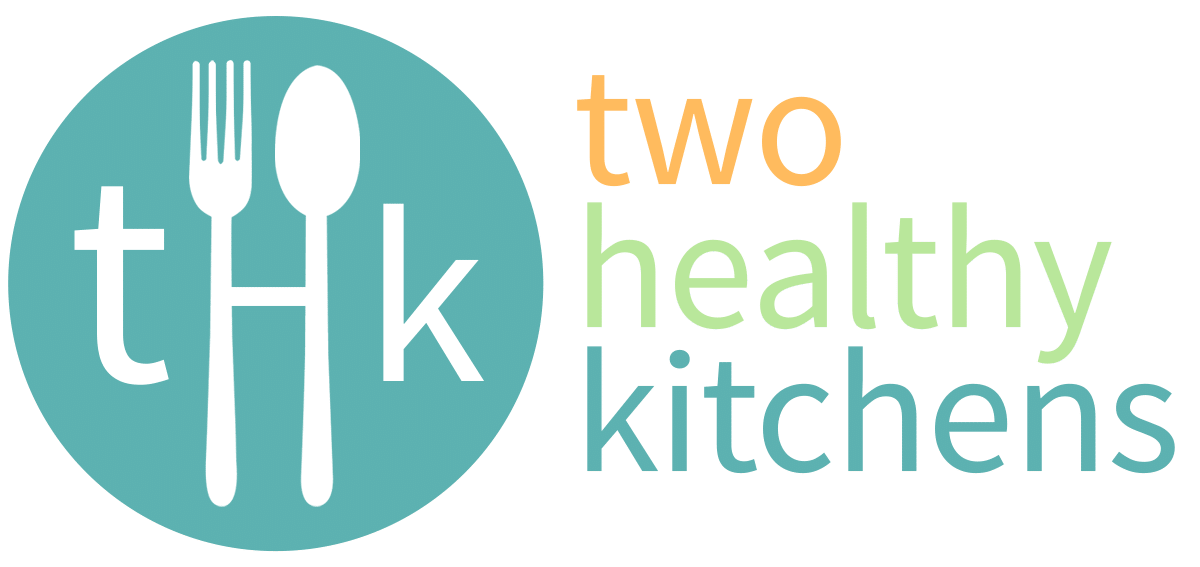
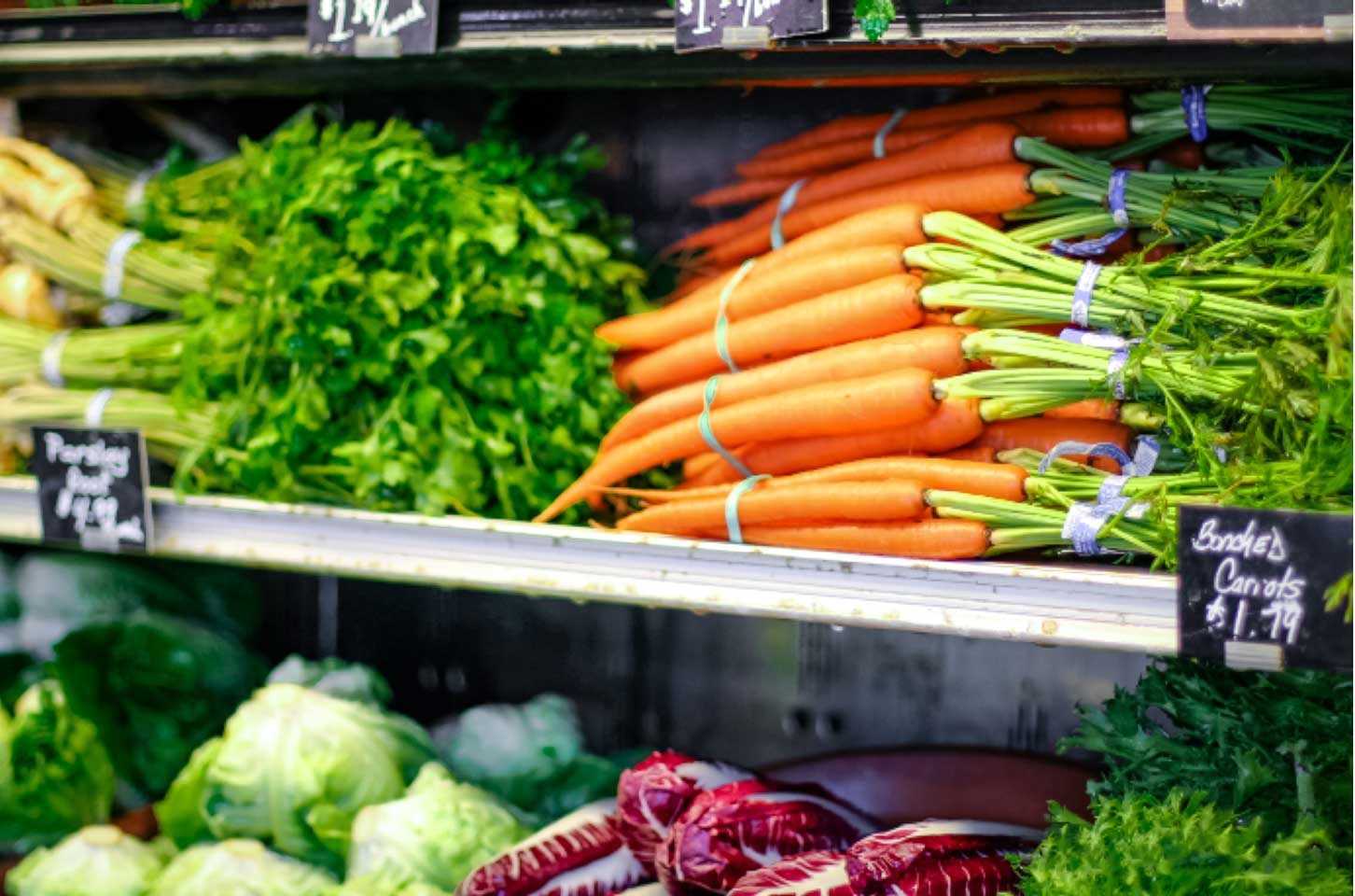

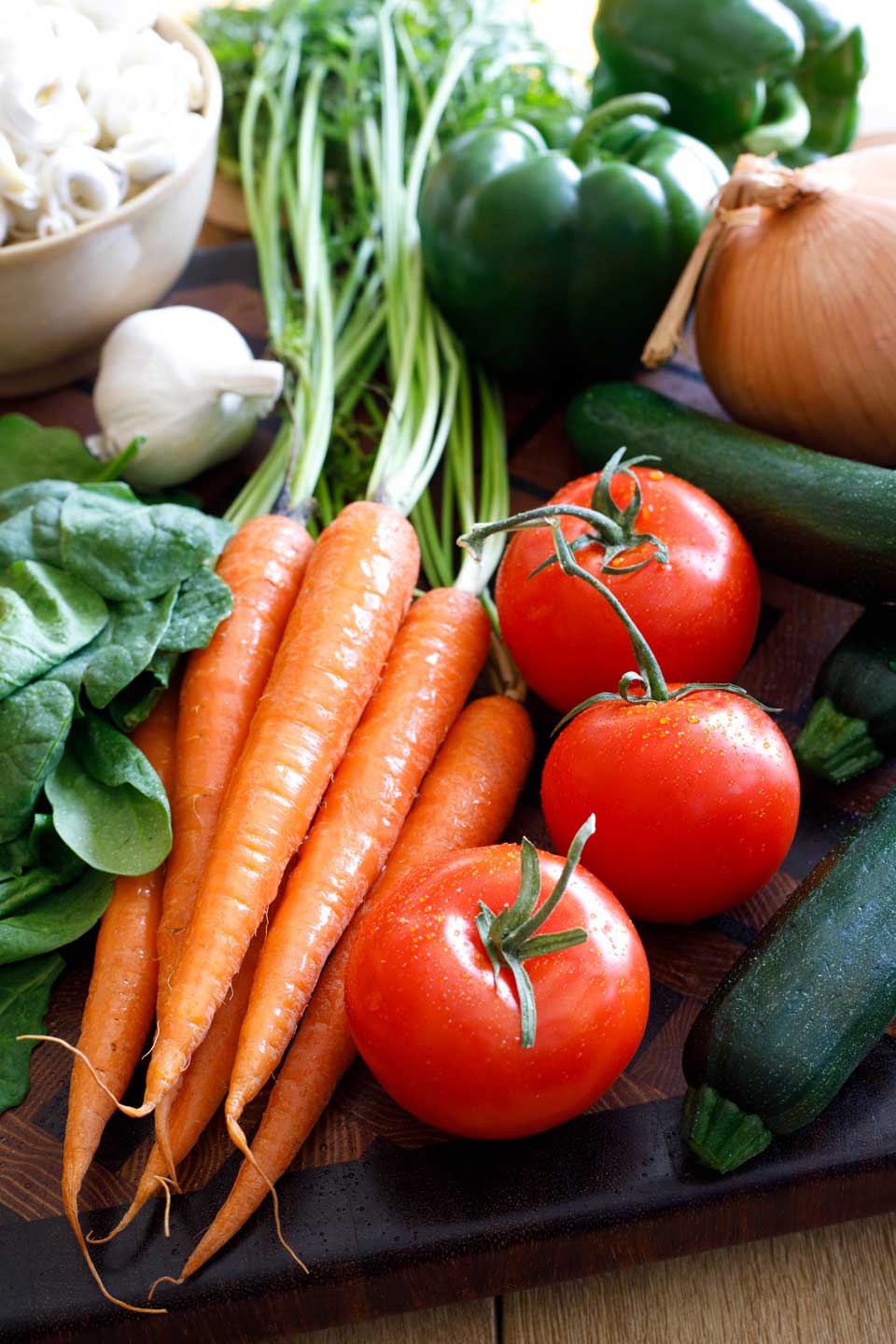
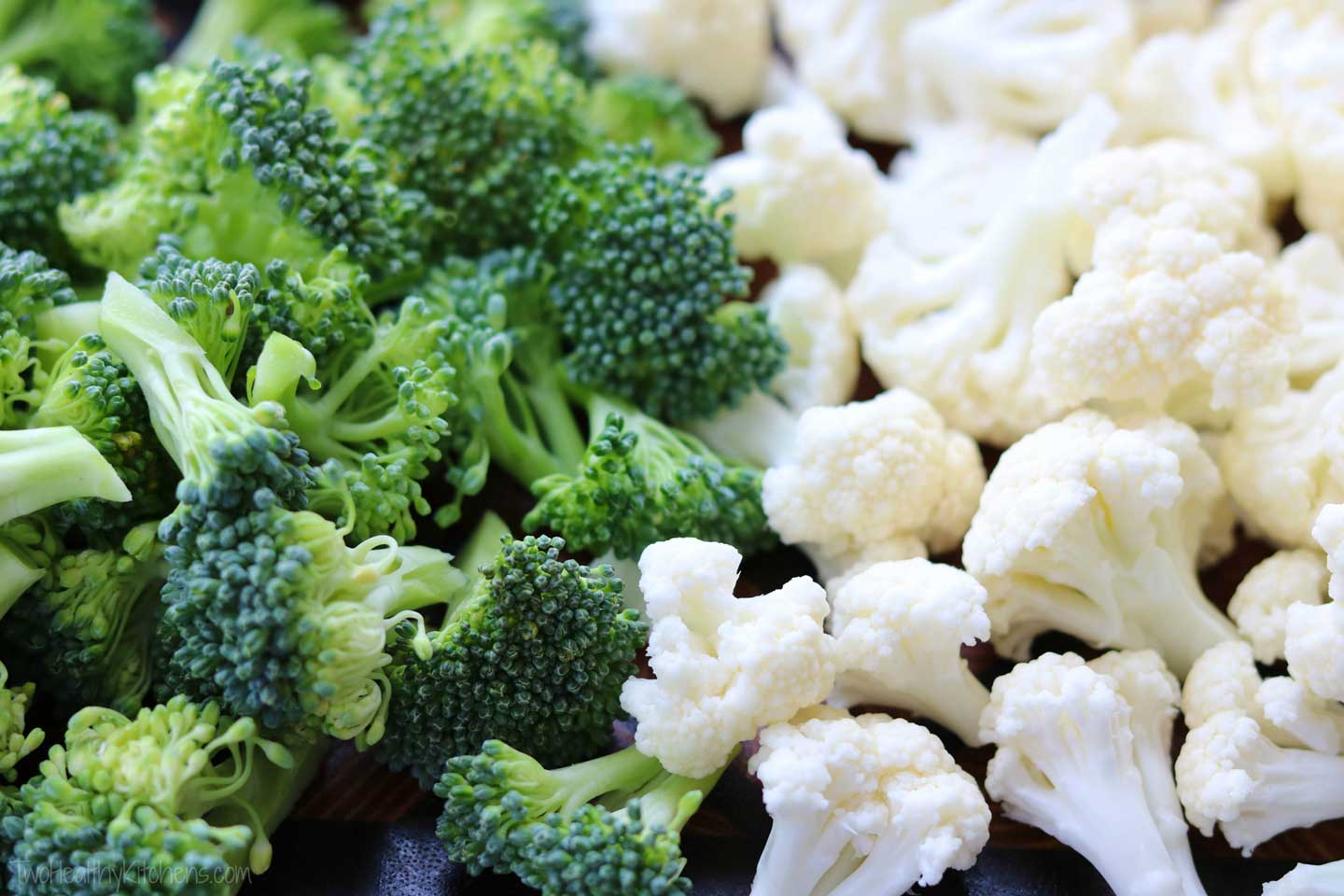

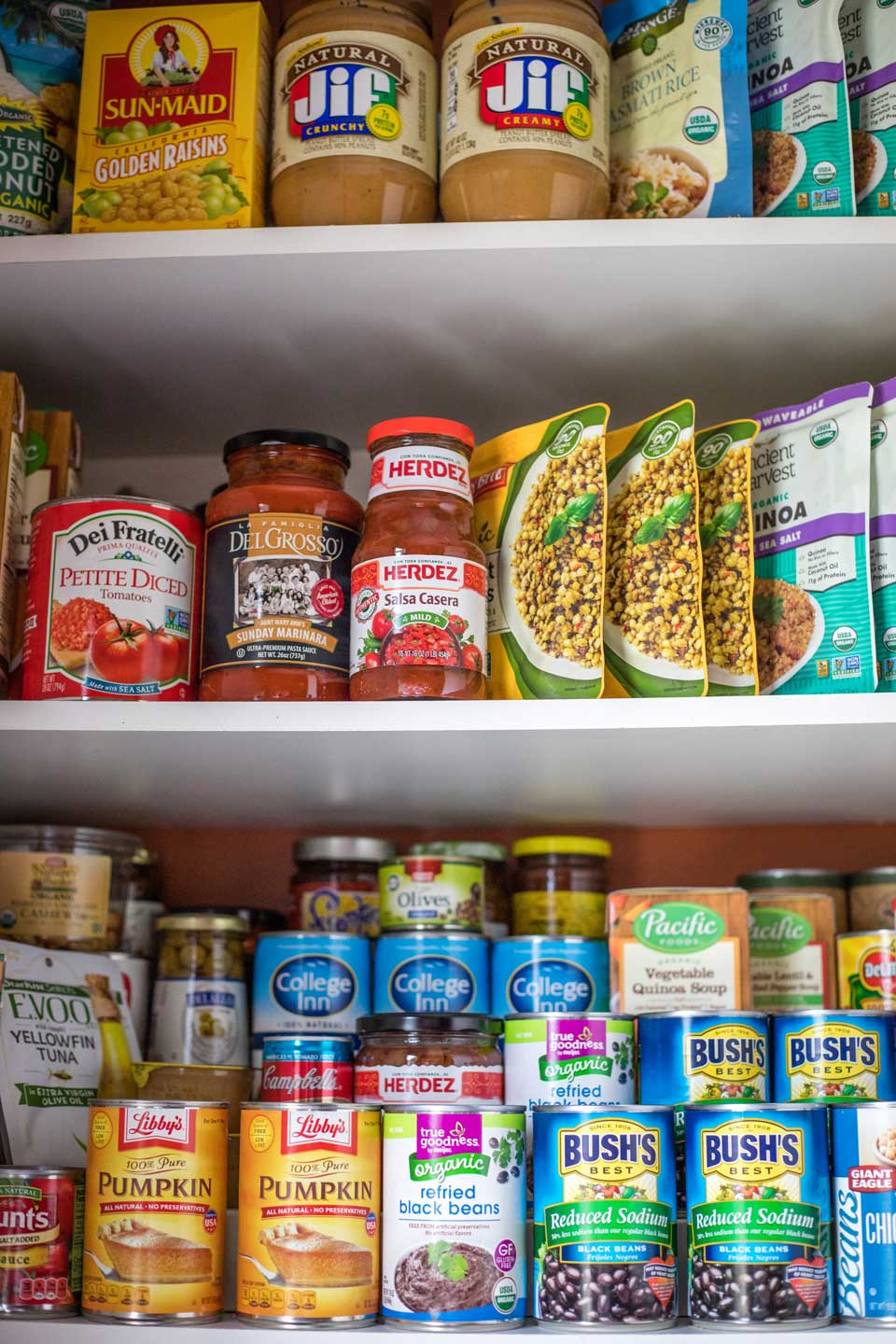
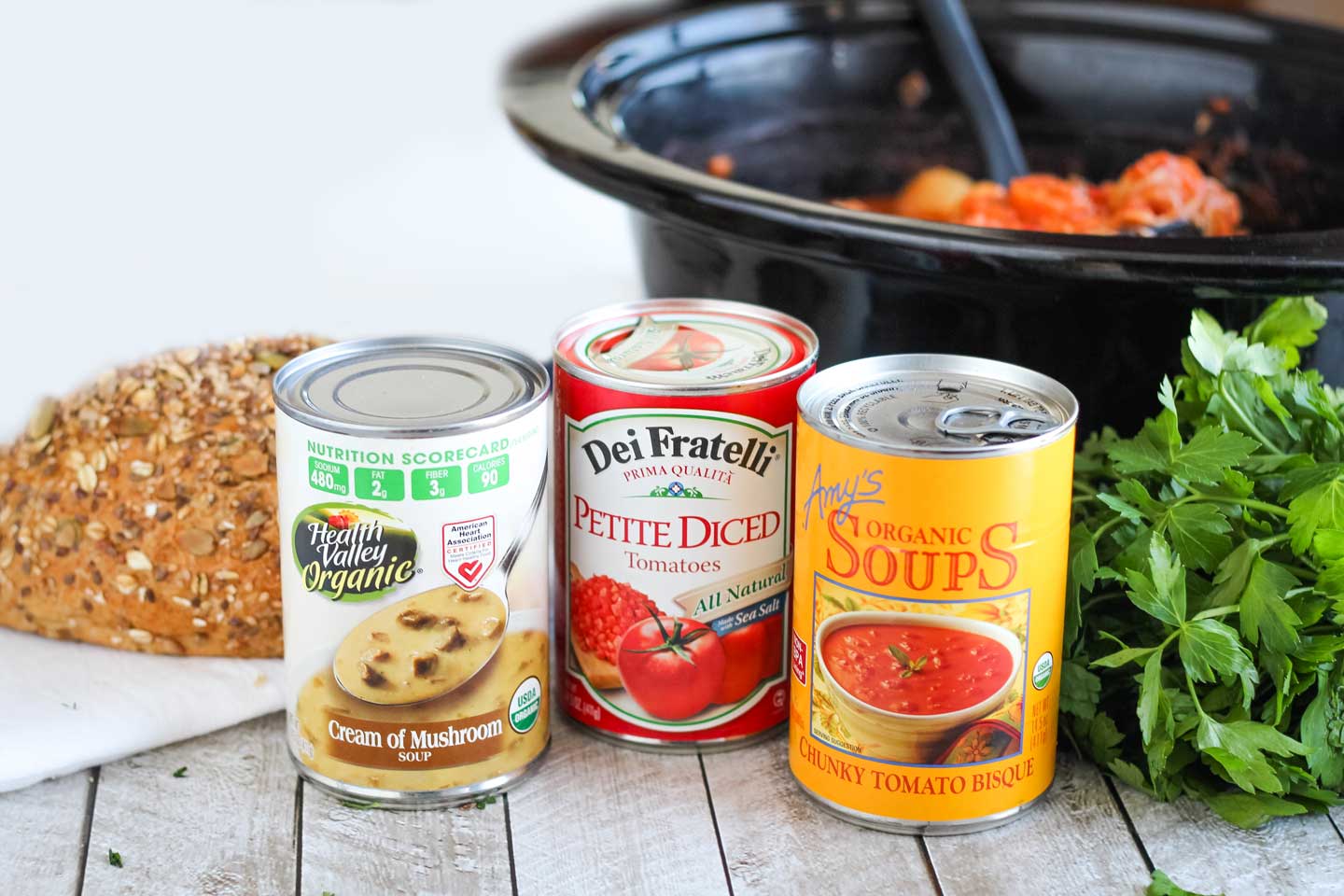
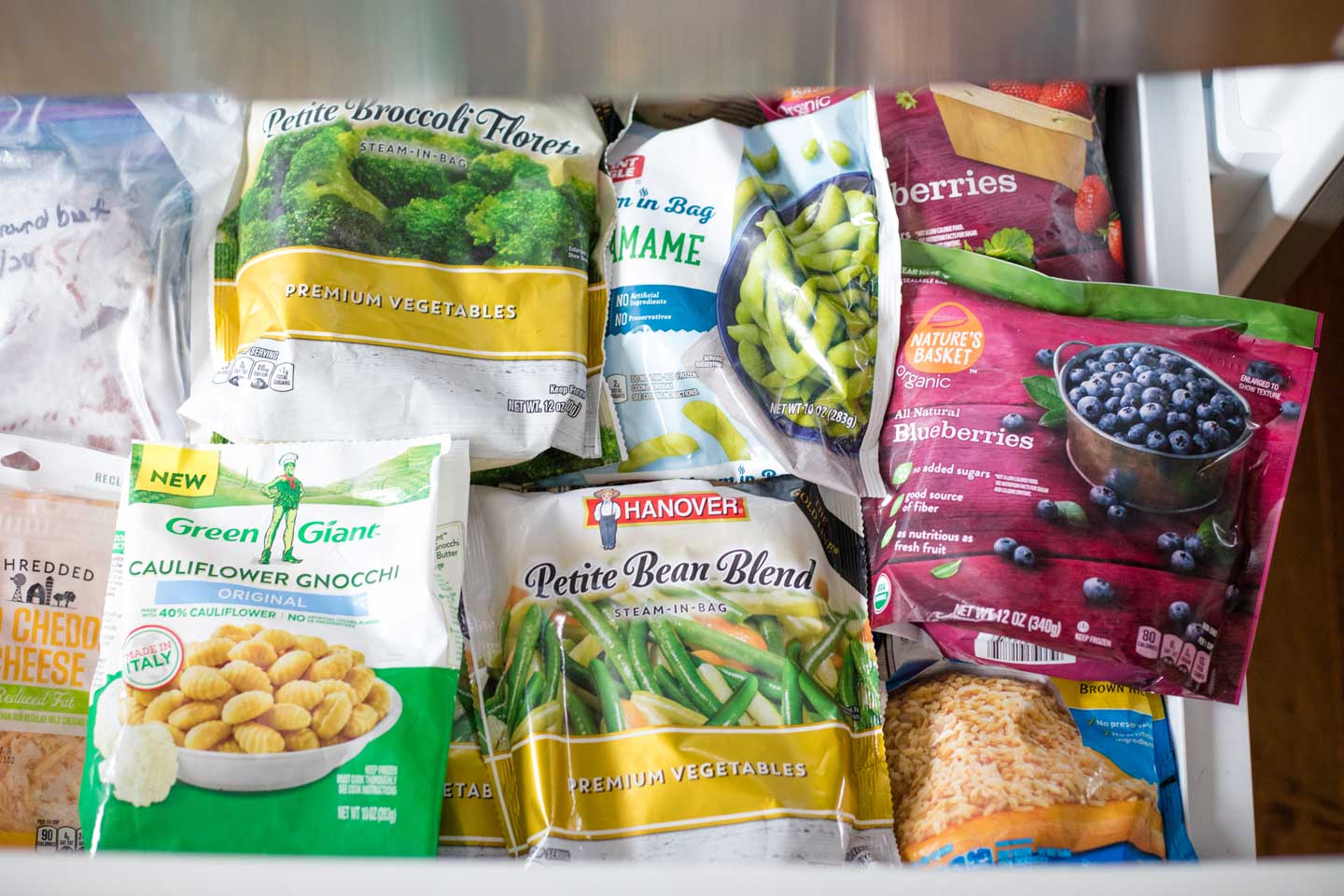
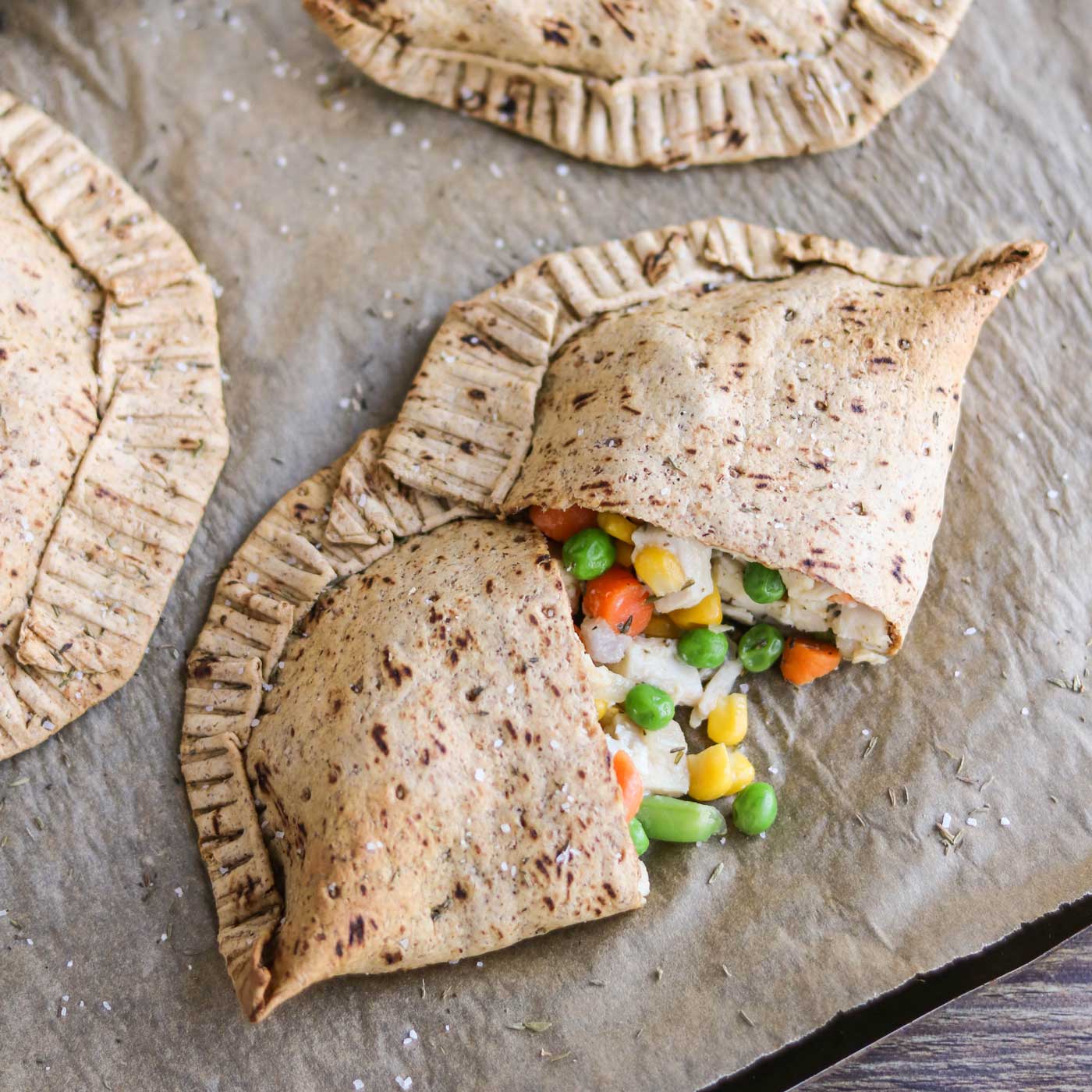
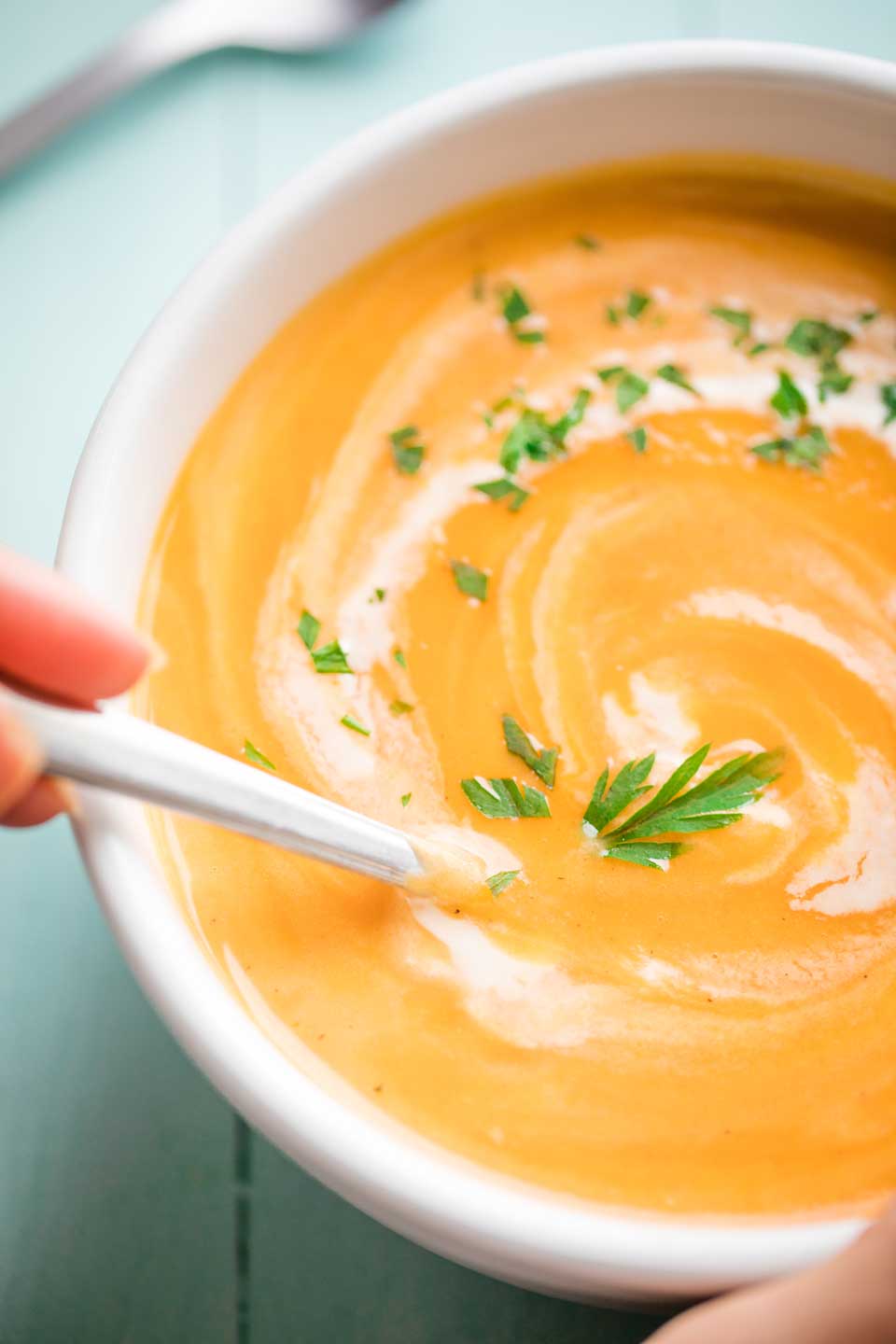
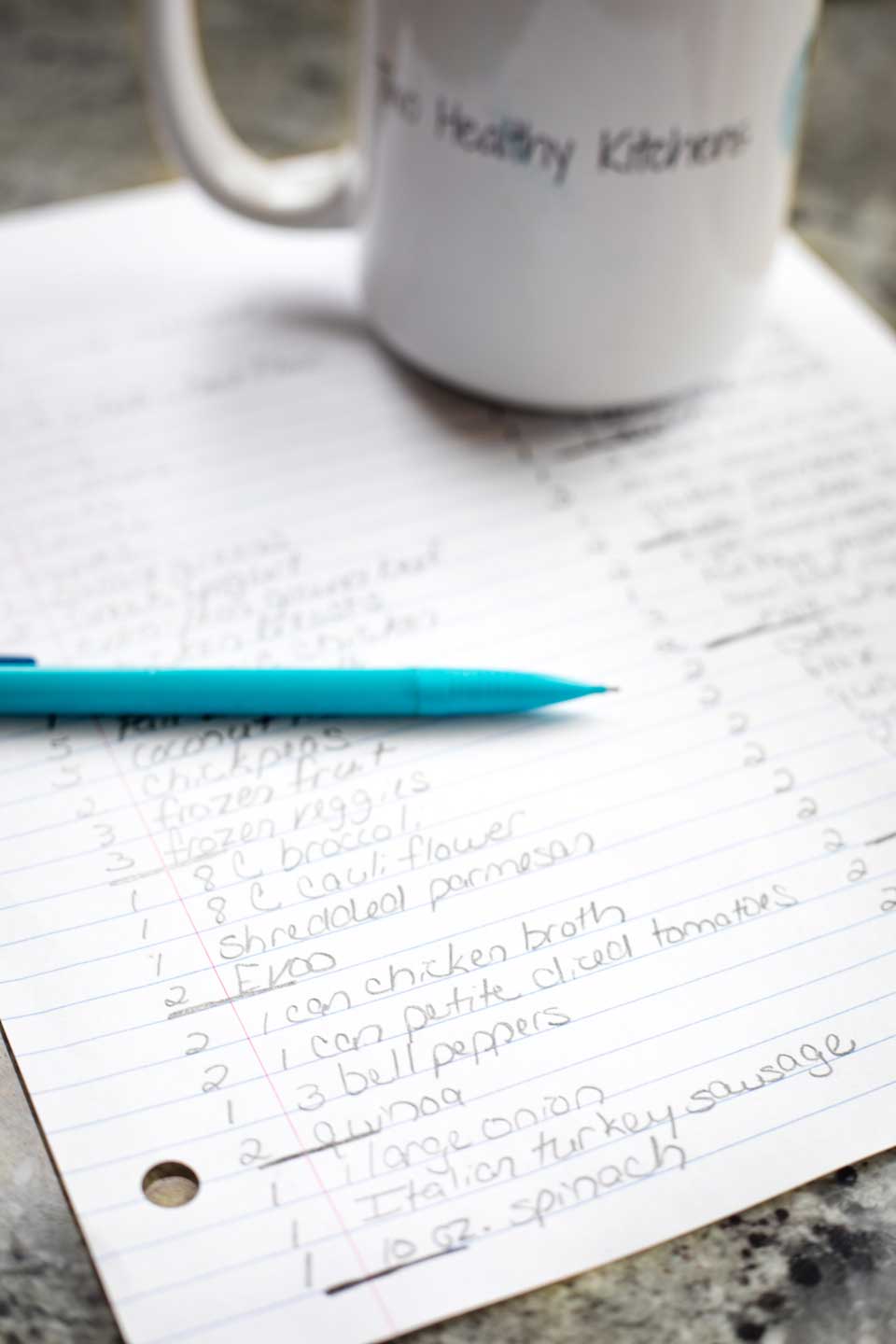
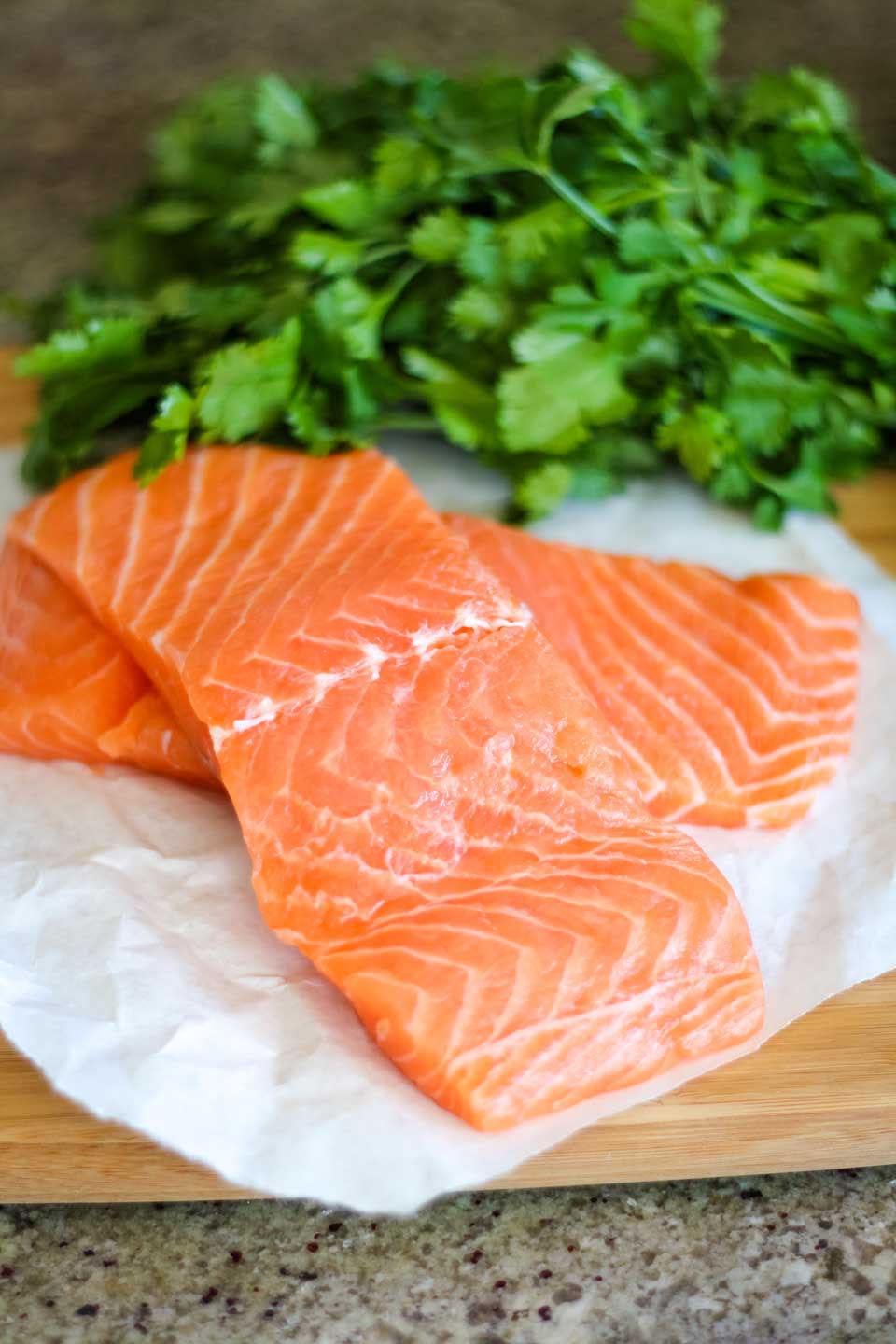
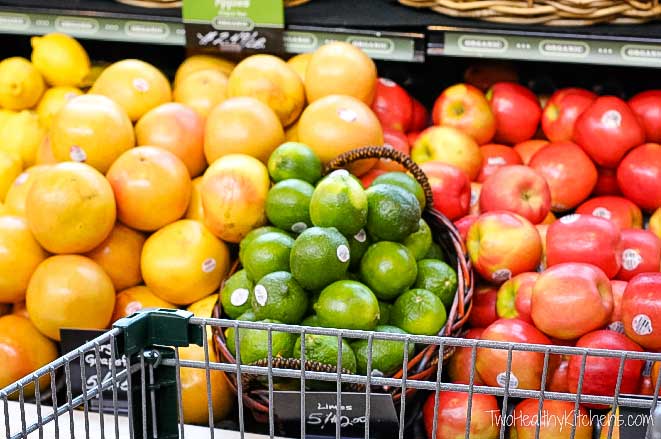
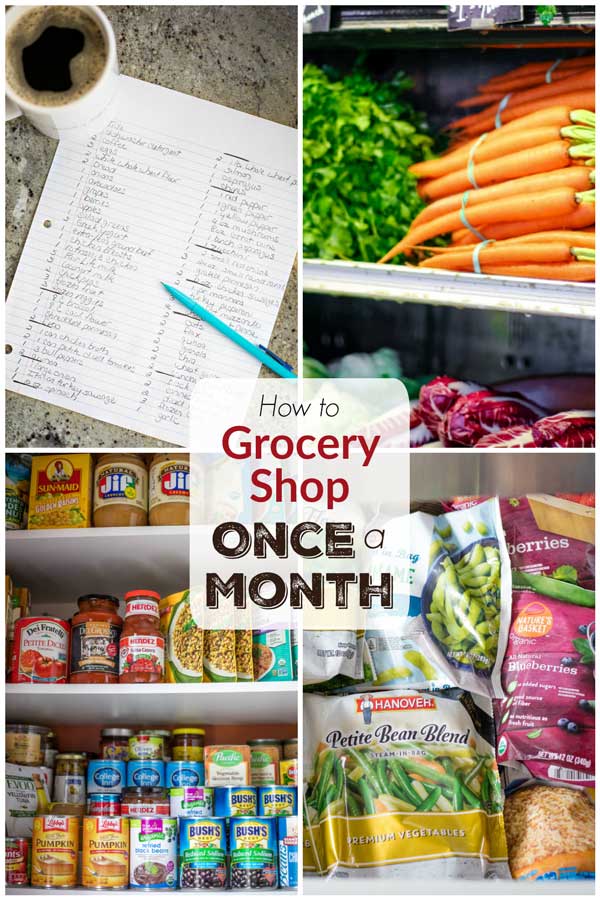
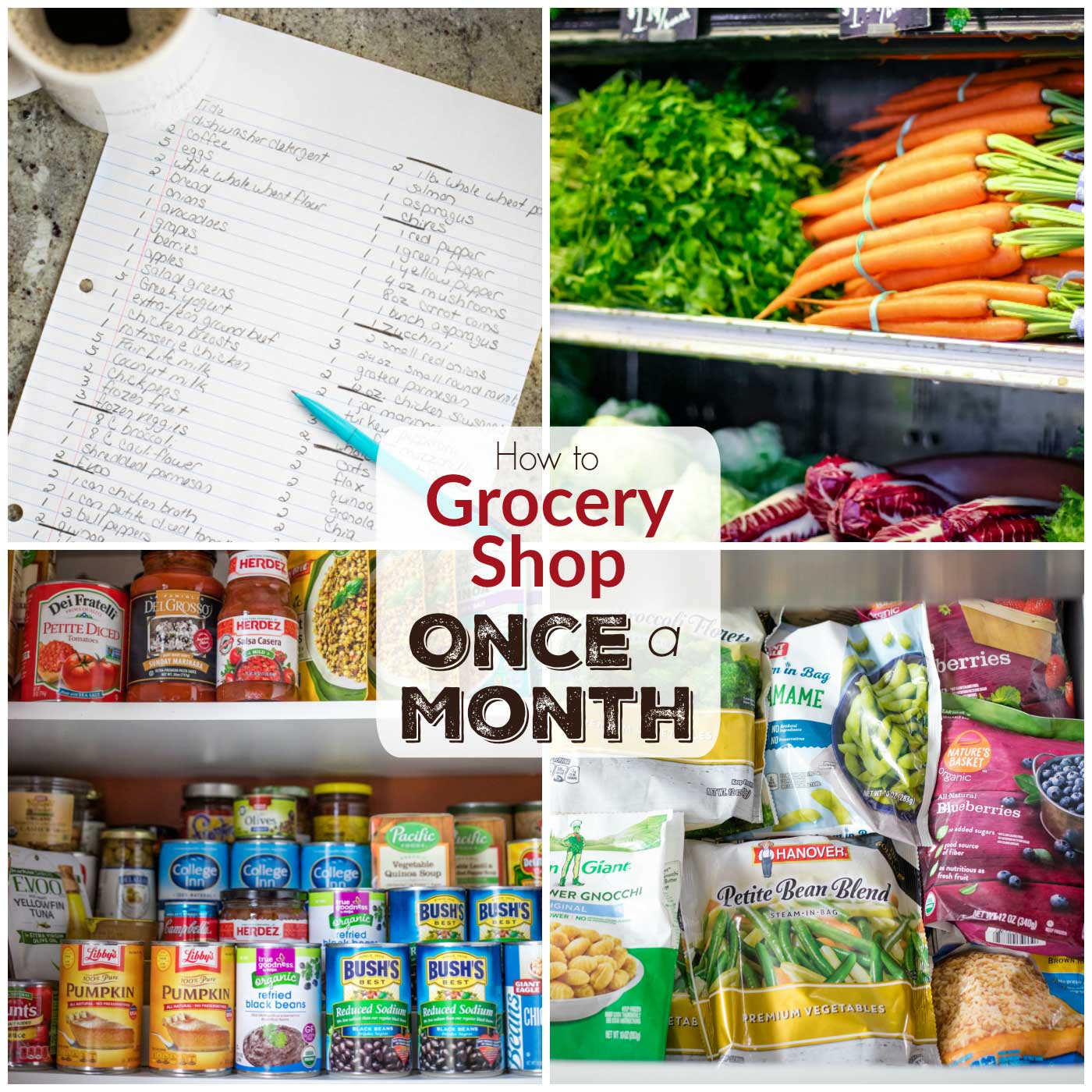


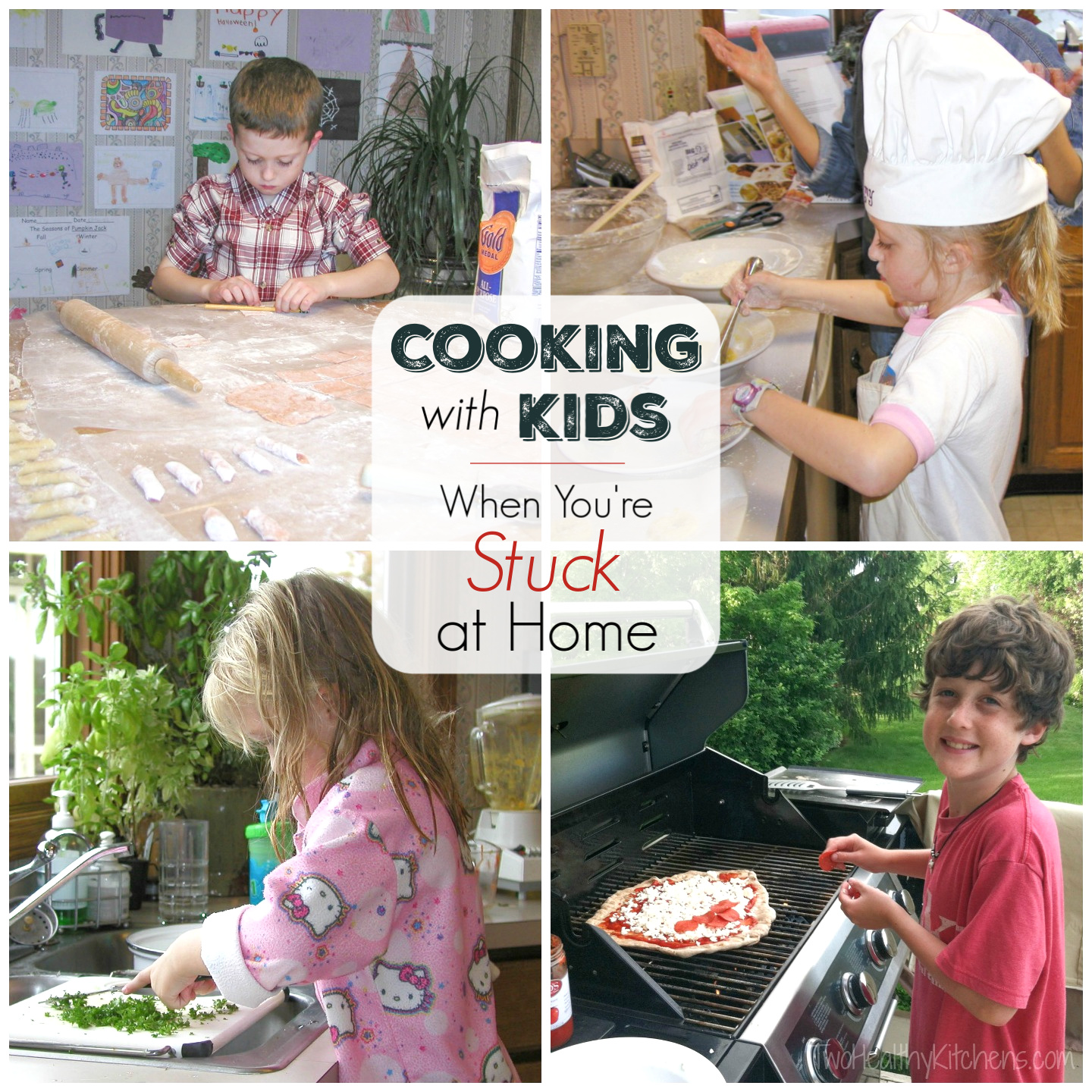

How do you do this for one person? I’m not a fan of leftovers, especially frozen leftovers…for weeks. Can I get away with a Costco trip once a month? I am buying a house and need to cut costs and take out food will be my first cutback.
Hi, Susan! I don’t have specific experience with cooking for one or with once-a-month shopping with that goal in mind. But, a lot of the same principles could apply, although it definitely gets much harder if you don’t like leftovers or freezing portions for future meals – which means many typical meal prep and meal planning strategies aren’t going to be a good option for you. My best advice would be to map out a month of meals that can leverage similar ingredients without being exactly the same – so you can buy one item (like a large container of quinoa, or dry pasta, for example) and re-purpose it in several different meals without creating leftovers. Also, you could look at ways to batch cook that don’t FEEL like leftovers or repetitive – for example, make a big batch of roasted peppers and onions (which could even be frozen in portions), and use them one night in fajitas, another night mixed into marinara sauce over pasta, etc. Also, I googled around and found a site that specifically focuses on meals for one (https://onedishkitchen.com/). Maybe you could find inspiration there and create a menu plan for the month that would revolve around similar ingredients you could economically stock up on. I hope those ideas help! Good luck with your new house (how exciting)! ~Shelley
This is amazing! I’ve been wanting to do this but had no idea where to start. Saving this and following your tips!!
I’m so happy to know this helped you! What I’ve realized is that, although I mapped out this shopping plan when we all were first grappling with lockdowns, it’s actually so useful in more “normal” times, too. Strategies that I can apply to be more time-efficient in not having to grocery shop as often, while also being a bit more thrifty in ensuring we don’t waste food. I really hope it helps you, too – keep me posted! And have a terrific weekend, Michelle! ~Shelley
One of the best shopping tips i ever heard was to keep a spending total by rounding every item up to the next dollar. for example, milk costs $2.50, so you write down $3. Bread costs $1.99, write down $2. At the end, you come in under budget and it is easier than adding all the pennies up in your head!
That’s a great tip! I’ll bet that strategy really does help you end up under budget – and so easily, too. How wonderful to be able to stock up for a whole month … UNDER BUDGET! Woot woot! 🙂 Thank you so much for sharing this wonderful idea! Hope you’re staying safe and well – and that you have a terrific week! ~Shelley
Shelley, I’m so glad you posted these helpful tips. I’ll say after you told me the other day that you guys shop for 4 weeks it became a discussion in my family on “how do they do that?!” I struggle with meal planning for that long of a period, but I think I can incorporate many of these tips to at least stretch my shopping out to 2 weeks. And when all else fails, I know who to borrow from, lol! Really, you often are a life saver. Thank you!!!
I’m so happy you thought this was helpful! I totally agree that meal planning for such a long time is HARD, but just feels so important right now. And actually, I’m hoping that some of the things I’ve had to figure out will help me be a better meal planner in the future, too – even after quarantine! Lucky we have each other to borrow from sometimes, though! 😉 ~Shelley
Shelley, I love the idea of using a highlighter to cross of items as I go through the grocery! Also, I’m one of those people who uses small notepad paper for my lists—I will definitely switch over to a full sheet of paper next time, especially since I’m now shopping for both our home and my senior parents!
I LOOOOOOOVE using my highlighters! Somehow it feels much more orderly than scratching things off with a pencil. And it’s saved the day more than once, when I was partway through a shopping trip and ran into some sort of snag that caused me to need to review items I’d already crossed off – I was so glad I could still read them through the highlighter! I’ll be curious how you like the full-page notebook paper, too, Sue. I can’t even imagine trying to cram everything onto a little notepad – my typical grocery runs (even before all this stockpiling) are about two columns on a notebook sheet! You’re so sweet to be helping your parents with their shopping – I hope my ideas help you a bit with keeping everything organized. Stay safe, friend!